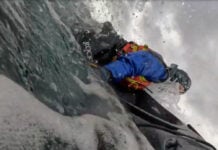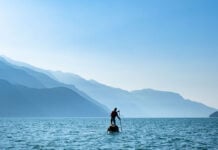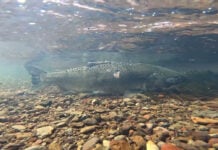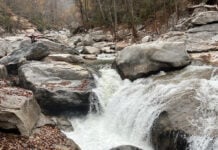Entering the Dickerson Whitewater Course, located smack in the middle of a massive generating station on the Potomac River in Maryland, is a lot like getting into a posh country club. Paddlers must first show appropriate identification and membership cards and find their names on a pre-authorized list
supplied by the local paddling club. Then the security guard has to escort them through the premises, passing a series of flashing lights and sirens— not to mention the four massive stacks rising from the facility.
Checking in is a hassle but it’s worth it when you consider the local paddling center gets to access this Class IV whitewater course free of charge. Not a bad arrangement when you’re training Team USA and hosting national championships on a course that’s—get this—heated.
When sub-zero temperatures descend on Maryland and the Potomac River freezes over, athletes like canoe slalom Olympian Ashley Nee can check into the only heated whitewater course in the country. Access to the course has become more restricted in recent years because of NRG Energy’s increased security concerns. Currently about 100 members of the Potomac Whitewater Racing Center are on the access list for the course. Regular use of the course is limited to U.S. National Team members.
First, you should know there aren’t heating elements in the course. The generating station, currently run by NRG Energy, diverts Potomac River freshwater through their system to cool the machinery that powers more than 400,000 homes. The warmed outflow is then returned to the river. This arrangement has been in place since the course was built in 1991 in preparation for the Olympic Games in Spain. NRG Energy says they occasionally run the pumps for the paddlers even when the plant isn’t running, as a courtesy.
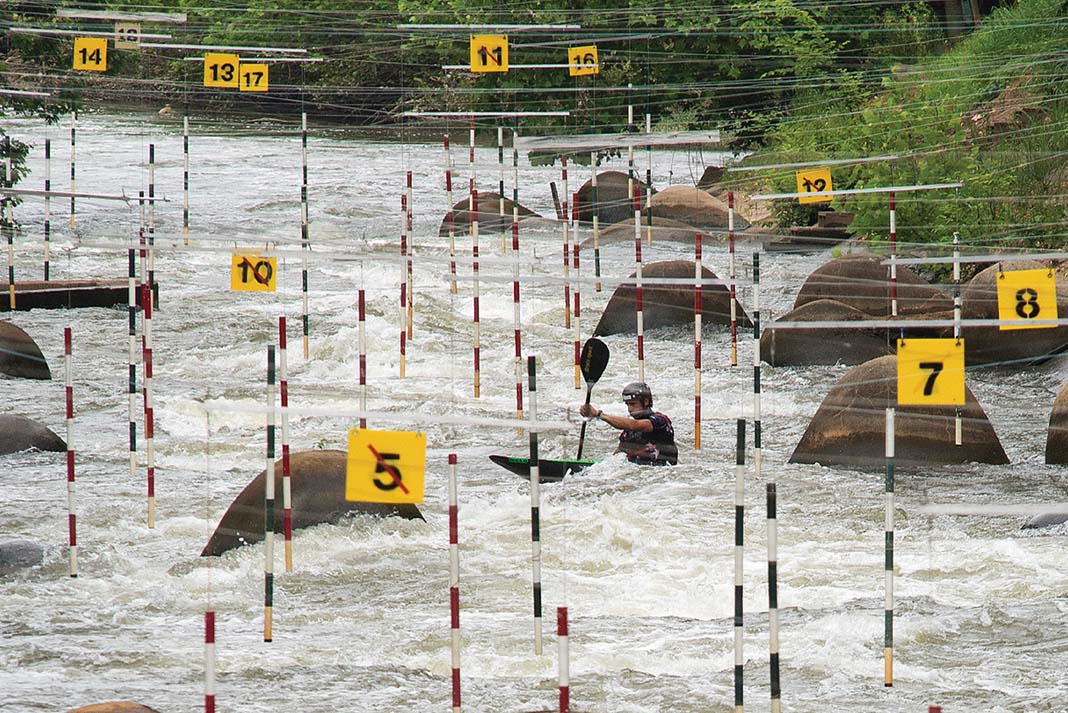
When Nee, a Maryland native, first started paddling the course at 14, there were just two steam-billowing stacks. She took one look at the boiling rapids and a daunting hole at the bottom of the course and declared with confidence there was no way she was getting in her boat. Six months later with newfound confidence she was back and hasn’t missed a year on the course since. She recalls a day last year when the temperature dropped to 17 degrees Fahrenheit and despite a comical ice build-up on her helmet she carried on her training as usual while her coach snapped pictures of her icy costume.
Nee, who is now on a first name basis with most of the security team, has learned to live her life by the sometimes unpredictable pumping schedule of the Dickerson course. Her training begins when she gets an email that says, ‘Dickerson is confirmed.’ This means the plant is generating and soon water will be pumping through the course at nearly 660 cfs, creating dynamic eddies, drops and hydraulics as the frothy gush passes over underwater concrete gumdrops and squeezes between the wing dams.
The 900-foot-long concrete chute, complete with hanging gates is uniquely designed to simulate competitive canoe slalom, perfect for training athletes, while coaches and onlookers can follow along the course on the grass from one of the protruding water level platforms.
The course only ever let down once. It was at the 2004 National Championships and Adam Van Grack, chair of USA Canoe/Kayak and long-time Dickerson paddler, remembers that day well. Due to a passing storm the Potomac River had risen to twice its normal height, flattening the whitewater features, leaving the rapids Class I at best.
“At that point all the racers had already shown up that morning,” says Van Grack with a laugh. “So the head of the U.S. National Team adjusted all the gates and we had the canoe slalom Whitewater National Championships on what is essentially flatwater.”
That day aside, the Dickerson Whitewater Course has stood the test of time. Since it was built, every whitewater slalom athlete that has represented the U.S. in the World Championships or Olympic Games has trained and competed on the course.
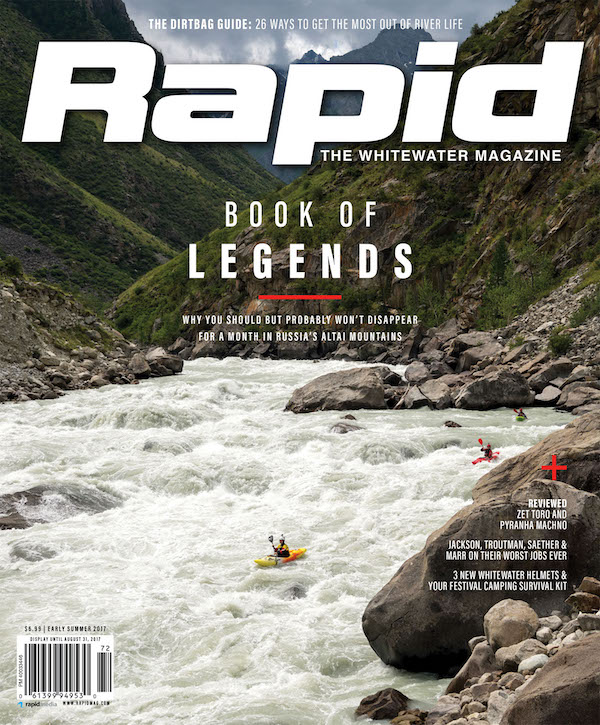
Subscribe to Paddling Magazine and get 25 years of digital magazine archives including our legacy titles: Rapid, Adventure Kayak and Canoeroots.



